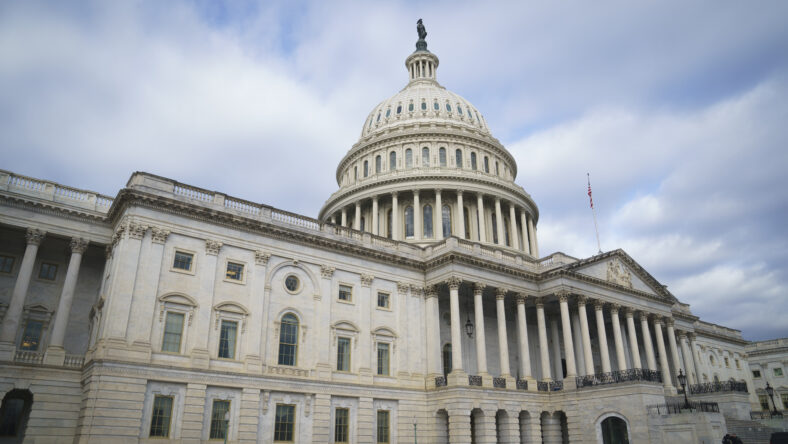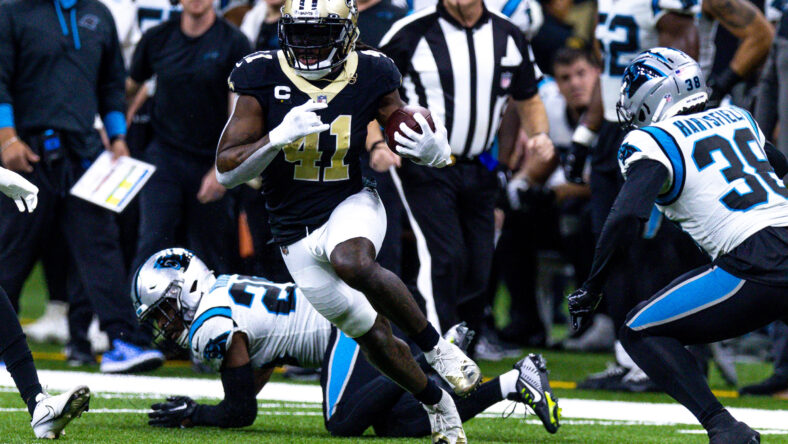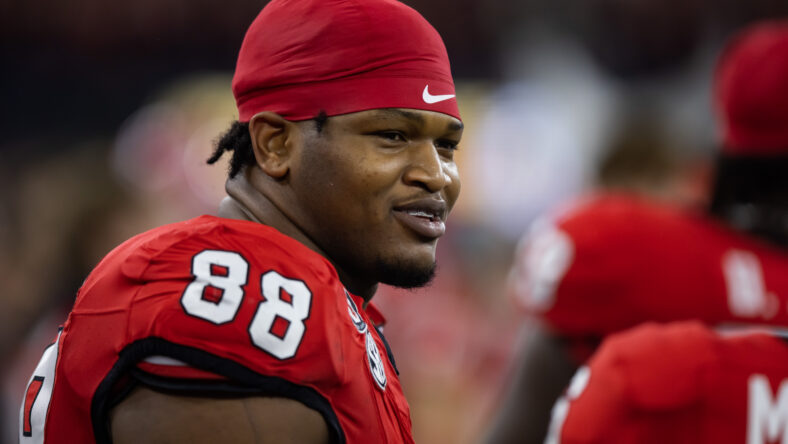Supreme Court Warns NCAA: Pay Student Athletes Their Fair Share
The broad consensus among analysts is that the Supreme Court’s narrow ruling in NCAA v. Alston, granting athletes expanded educational benefits only, still leaves a lot of gray when it comes to whether athletes can legally profit off their name, image, and likeness or be paid wages. As more than a handful of states prepare to put new laws into effect on July 1st, that will enable athletes to strike endorsement and sponsorship deals, the NCAA’s position on whether athletes can receive compensation for their own publicity rights and labor is a big unknown.
But fear not. The Supreme Court did not avoid the question, in fact, a close reading of its decision reveals the opposite. The Justices embedded a stark warning to the NCAA, that makes clear that the NCAA has no business restricting athletes’ rights to profit off their own name, image, and likeness and that they should be entitled to some revenue share. In fact, SCOTUS created a very specific test that will likely be employed in courts across the nation to help Judges determine when an NCAA or University restriction on a student athlete’s compensation is legal or illegal, and that includes NIL. This means if the NCAA even tries to unfairly restrict a student athlete’s NIL rights it can expect to be sued and, in my opinion, will lose.
In furtherance of my “Legal Easy” brand, here is a layman’s summary of the Court’s new legal test that gives athletes an avenue of relief to challenge all future NCAA restraints on compensation and how the new test came to be:
The Supreme Court starts with the unusual premise that this case is unlike most antitrust lawsuits because the NCAA is on its face violating the law. The antitrust laws in this country protect competition in labor and industry, based on the theory that a free market and the resources available to consumers and businesses will thrive if competition is not unfairly restrained. The main federal antitrust law, called the Sherman Act, prohibits contracts, conspiracies, or agreements that aim to restrain free trade.
So normally when someone alleges that a big corporation or entity is restraining the marketplace by dominating it and limiting where people can be employed and how much they can make, there are questions that must be answered like: Is the entity a monopoly? Is the entity in fact price-fixing by capping wages? And was there an illegal agreement to do so in restraint of free trade?
Here, the Supreme Court points out that the NCAA is admittedly violating just about every element of the Sherman Act. The NCAA admitted it has a monopoly on college sports. It admitted it has agreed with member universities to depress student-athlete wages below their market value (a conspiracy) and it admitted that its depression of wages restrains free trade of athlete services.
The NCAA’s entire “defense” was based on its claim that it’s entitled to violate the antitrust laws in the name of amateurism. Well, the Supreme Court all but laughed this excuse out of the ballpark. Not only did the Justices put the word “amateur” in quotes, to mock it but Justice Neil Gorsuch who wrote the majority opinion went on to conclude that no one, not even the NCAA knows what amateurism even means. The Court says, the NCAA has never had a consistent definition of amateurism and it is even unclear to the Courts what it is. When they asked the NCAA to explain it, it could not. How embarrassing!
So in lieu of “amateurism,” the Supreme Court calls college sports exactly what it is: a “profitable enterprise.” It’s a commercial business, plain and simple. Amateurism, shmamateurism!
In its commercial business, the athletes are providing the labor and clearly, their compensation is below what an unrestrained, competitive market would yield. The Supreme Court went on to detail the entire history of the NCAA, its evolution, and where it stands today and did so for an important reason. The cash cow it has become is critical to the Court’s analysis and the NCAA’s ability to get away with any restrictions in the future.
The NCAA was formed in the early 1900s after President Theodore Roosevelt met with leaders from Harvard, Yale, and Princeton to put standards in place after an uptick in athlete deaths from college football. The newly formed body quickly agreed that student-athletes should not receive any compensation in an effort to curb the underground pay for play maneuvers corrupting college sports. However, over the years, the NCAA relaxed those restrictions, first offering scholarships, then full-tuition, and ultimately even more perks from athletic to academic awards, books, supplies and money from boosters. Well, all the while, the Supreme Court notes, consumer demand for college sports has skyrocketed, as evidenced by the explosion in profits. Most notably, demand has grown even as the NCAA has relaxed its standards on various forms of athlete compensation. Hence, restricting athlete compensation to protect college sports as an industry is simply not a justifiable reason.
For decades the NCAA has defended its amateurism model, claiming the Supreme Court itself gave it immunity from antitrust laws and the authority to have unfettered rule-making powers. When the NCAA was challenged over its restrictions on television contracts in the 1980s in a landmark Supreme Court case nicknamed “Board of Regents,” its loss opened the floodgates for colleges to garner lucrative contracts to televise college sports. However, SCOTUS made a passing comment in the opinion that the NCAA’s mechanisms to preserve the tradition of amateurism was fully in line with the antitrust laws. Following, Board of Regents, merchandising, and national sponsorships and partnerships soon followed. The college sports scene not only began to boost enrollment, fuel donations, and generate revenue for the NCAA’s members but that money began to flow to employees of the governing body and its member schools. Division 1 coach salaries now number in the millions of dollars a year and NCAA President Mark Emmert makes upwards of $4 million dollars a year. As Supreme Court Justice Brett Kavanaugh points out, everyone’s pockets are getting lined except the athletes providing the labor at the heart of the product, many of whom are African American and from low-income backgrounds.
This exploitative economic reality is at the center of the Supreme Court’s decision to call BS on the NCAA and hold it accountable. Not only does the Court say that the passing mention of amateurism in Board of Regents means nada but it hammers down on the cash cow the NCAA is generating. Market realities matter! The amount of money the NCAA is making matters; It matters to help athletes evaluate their own market values so they can get paid fairly and it matters to evaluate whether the NCAA is unfairly restraining an athlete’s ability to get paid.
So here is what the Supreme Court did: it said your days of exploiting athletes are over NCAA. From now on, any time the NCAA or a member school wants to restrain an athlete’s compensation, a Court must examine whether that restraint is reasonable and necessary to sustain consumer demand for college sports. Meaning, the NCAA must show that the restraint directly relates to and furthers its own need to stay competitive in the marketplace. Given that it has a monopoly, it’s not going to be an easy task to justify any of its restraints on compensation. This doesn’t mean the NCAA should cease to exist. For example, the Supreme Court says that the NCAA’s role of setting rules for competition such as how many players can be on the field, or the time allotted for play serve a procompetitive role. Similarly, in the financial category, ensuring that college athletes don’t make unlimited salaries akin to professional athletes, serves a competitive role in differentiating the college sports product from the pros and thereby sustaining consumer demand for it. But, outside of the college sports model, putting restraints on an athlete’s ability to profit off his/her own name, image, and likeness, so long as he/she does not use his or her’s school’s name, has nothing to do with consumer demand for college sports. It would never pass the legal test. The Supreme Court made it crystal clear that some horizontal restraints on competition are essential and the NCAA’s procompetitive needs should be considered. However, any restraint that goes too far will be illegal.
As Justice Kavanaugh articulates in his landmark concurring opinion which will no doubt form the basis for future law in college sports and beyond: “Today, the Court holds that the NCAA has violated the antitrust laws.” He goes on to say, “the NCAA’s remaining compensation rules also raise serious questions under the antitrust laws.” While the Supreme Court could not weigh in on which of the remaining compensation restrictions are illegal, because the athletes never challenged them to the Highest Court (a strategic failure on their part), Kavanaugh makes clear that the Supreme Court has now established “how any such rules should be analyzed going forward.”
If the NCAA is not careful it will be brought back to court by a new set of litigants for violating antitrust laws and subject to the new legal test. There will be a careful analysis of “market realities,” which means that if the NCAA is still making a whole lot of dough, it will have little to no justification for keeping that money from the laboring student-athletes. Absent legislation giving the NCAA an antitrust exemption, or absent a union, which would also give it an exemption, the NCAA can expect to be in court in the very near future if it tries to restrict athlete compensation in the slightest. While the NCAA will then have to raise a valid procompetitive justification, Kavanaugh thinks the NCAA overall “lacks such a justification,” calling its whole business model “flatly illegal in almost any other industry in America.” As he says, “price-fixing labor Is price-fixing labor.” “The bottom line is that the NCAA and its member colleges are suppressing the pay of student-athletes who collectively generate billions of dollars in revenues for colleges every year,” says Kavanaugh, “the NCAA is not above the law.” It is clear that according to Kavanaugh and the Court as a whole, not only should athletes be allowed to independently profit off their name, image, and likeness (an area where the NCAA has zero interest, authority, or procompetitive justification), but going forward, athletes deserve to be paid a share of the overall NCAA revenue, at least in the form of a fair market value for their labor. Hopefully, Congress or a union steps in and creates a framework for athletes and the NCAA to move forward on equal footing. For now, expect a very healthy new revenue stream for athletes as they get set to capitalize on their name, image, and likeness with hopefully little to no interference from the NCAA.



